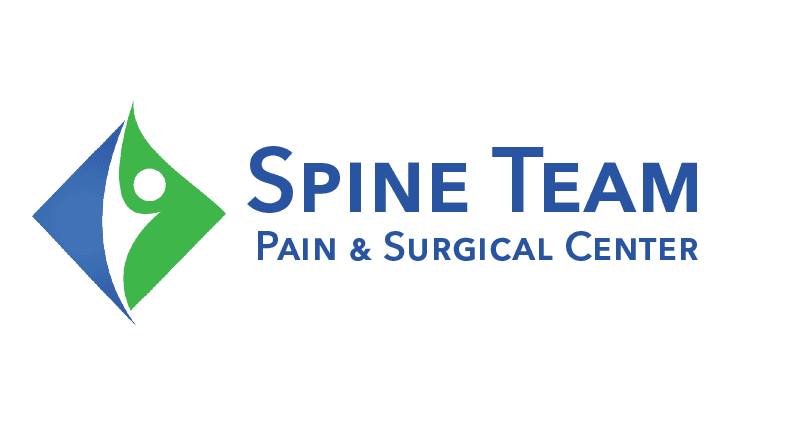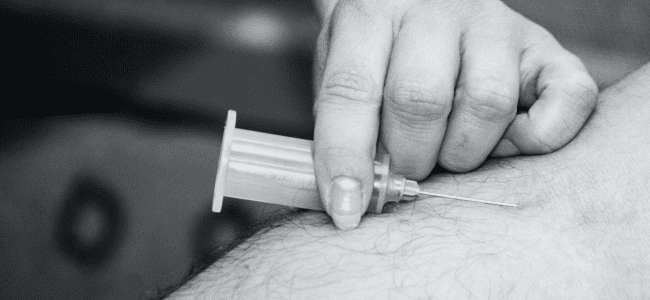What Next if Facet Joint Injections Don't Work?
Struggling with unresolved pain after facet joint injections? You are not alone. In fact, many patients do not experience the relief they hope for due to various reasons like injection inaccuracy or complex anatomy, leaving them frustrated and puzzled about next steps.
This blog will guide you through alternate treatment options if your facet joint injections failed to provide relief, shedding light on procedures such as medial branch radiofrequency neurotomy and lifestyle adjustments that could potentially be a game-changer.
Key Takeaways
- Facet joint injections may fail due to injection inaccuracy or dense bones around the joints, hindering the medication from reaching the correct spot.
- Alternative treatment options for facet joint pain include medial branch radiofrequency neurotomy, physical therapy, chiropractic care, lifestyle changes, epidural steroid injections, and surgery.
- Lifestyle changes such as regular exercise and maintaining a healthy weight can significantly help manage facet joint pain.
- If facet joint injections don't work, it is crucial to consult with a healthcare professional to explore alternative treatment options and discuss potential procedures like radiofrequency ablation.
What to Do If Facet Joint Injections Don't Work
If facet joint injections do not provide the desired pain relief, it is important to consult with a healthcare professional to explore alternative treatment options and discuss the possibility of radiofrequency ablation.
Consult with a healthcare professional
If you have tried facet joint injections and they did not provide the pain relief you were hoping for, it is essential to consult with a healthcare professional. They can evaluate your individual case, assess the reasons why the facet joint treatments may have failed, and recommend alternative treatment options.
It's crucial not to give up hope but rather work closely with your doctor to find the best solution for managing your pain. Remember, everyone's situation is unique, and there are various treatments available that may be more effective for your specific needs.
Trust in your healthcare provider's expertise as they guide you towards finding an appropriate next step in your nerve pain management journey.
Explore alternative treatment options
If facet joint injections don't provide the desired pain relief, it is essential to explore alternative treatment options. There are various non-surgical approaches available that can help manage facet joint pain.
One option is medial branch radiofrequency neurotomy, where electrodes are used to target and disrupt the nerves responsible for transmitting pain signals from the affected joints.
Physical therapy and chiropractic care may also offer benefits by improving flexibility, strengthening supporting muscles, and alleviating stress on the facet joints. In some cases, making lifestyle changes such as maintaining a healthy weight and engaging in regular exercise can contribute to overall pain management.
Discuss radiofrequency ablation
Radiofrequency ablation is a potential treatment option for individuals who do not experience relief from facet joint injections. This procedure involves the use of a needle to deliver electrodes to the affected facet joints, which then emit radiofrequency energy to numb or disable nerves that are causing pain.
By interrupting the transmission of pain signals, radiofrequency ablation can provide significant pain relief and improve overall function. It is important for individuals experiencing persistent pain after failed facet joint injections to discuss this alternative with their healthcare provider, as it may be an effective solution in managing their condition.
Reasons Why Facet Joint Injections May Fail
Facet joint injections may fail if the injection does not reach the correct spot in the joint or if there are dense bones around the joint.
Injection not reaching the correct spot
One common reason facet joint injections fail is the inability to accurately deliver medication into the targeted spot. For an injection to be successful, it must reach the specific area within the joint where pain originates.
Yet, complexities of human anatomy can sometimes hinder this precise delivery. Dense bones surrounding a patient's joints or other unique anatomical factors may obstruct access. In these cases, despite being administered by skilled medical professionals using advanced techniques, relief might not be experienced.
The medicine simply doesn't hit the right location and thus fails to alleviate discomfort as intended.
Dense bones around the joint
One possible reason why facet joint injections may not work is if the patient has dense bones around the joint. This can make it difficult for the injection to reach the correct spot and deliver the medication effectively.
Dense bones can act as a barrier, preventing the medication from reaching its intended target and reducing its effectiveness. When this happens, alternative treatment options should be considered to address the pain caused by facet joint issues.
It's important for patients with dense bones to consult with their healthcare provider who can explore other suitable treatments like radiofrequency ablation or physical therapy to provide relief from persistent pain in these cases.
Alternatives to Facet Joint Injections
Medial branch radiofrequency neurotomy, physical therapy, chiropractic care, lifestyle changes, epidural steroid injections, and surgery are all alternative treatment options to consider if facet joint injections do not provide sufficient pain relief.
Medial branch radiofrequency neurotomy
One alternative treatment for facet joint pain if injections do not provide sufficient relief is medial branch radiofrequency neurotomy. This procedure involves using a needle to deliver electrodes to the affected facet joints.
These electrodes then emit a low-level electrical current that heats up and deactivates the sensory nerves responsible for transmitting pain signals from the facet joints to the brain.
By interrupting these pain signals, medial branch radiofrequency neurotomy can offer significant long-term pain relief and improve overall quality of life for individuals suffering from persistent facet joint pain.
Physical therapy
Physical therapy is often recommended as an alternative treatment for facet joint pain if injections don't provide sufficient relief or prove to be ineffective. Physical therapists can design personalized exercise programs aimed at strengthening the muscles around the facet joints, improving flexibility, and promoting overall spine health.
Through targeted exercises and stretches, physical therapy can help alleviate pain, increase range of motion, and improve function without invasive procedures or medications. Additionally, physical therapists may use modalities such as heat or cold therapy to provide temporary pain relief during sessions.
By addressing the underlying causes of facet joint pain through physical therapy, individuals may experience long-term improvements in their condition and regain a better quality of life.
Chiropractic care
Chiropractic care is often recommended as an alternative treatment for facet joint pain if injections do not provide sufficient relief or if the injections do not work at all. Chiropractors are trained healthcare professionals who specialize in diagnosing and treating musculoskeletal disorders, including issues with the facet joints.
They use manual manipulation techniques to realign the spine and reduce pressure on affected joints.
One of the main benefits of chiropractic care is its non-invasive nature. Unlike surgery or injections, chiropractic adjustments aim to restore proper alignment and function without resorting to medications or invasive procedures.
This can be particularly appealing for individuals looking for drug-free pain management options.
Research has shown that chiropractic care may help alleviate facet joint pain by reducing inflammation, improving joint mobility, and promoting overall spinal health. Additionally, many patients report experiencing improvements in their range of motion and reduced discomfort after receiving chiropractic treatments.
It's important to note that while some people may find significant relief from facet joint pain through chiropractic care alone, others may benefit from combining this treatment approach with other therapies such as physical therapy or lifestyle modifications.
Lifestyle changes
Making certain lifestyle changes can significantly help manage pain from facet joint issues. Engaging in regular exercise, such as low-impact activities like walking or swimming, can strengthen the muscles surrounding the facet joints and provide support, reducing discomfort.
Maintaining a healthy weight is also crucial since excess weight puts extra strain on the joints. Additionally, practicing good posture and using ergonomic furniture can minimize stress on the joints and promote proper alignment.
Lastly, avoiding repetitive movements that exacerbate pain and incorporating relaxation techniques into daily routines may assist in managing discomfort from facet joint problems. By adopting these lifestyle modifications, individuals suffering from persistent pain can potentially improve their overall quality of life and reduce reliance on invasive interventions.
Epidural steroid injections
Epidural steroid injections are another treatment option that can be considered if other facet joint treatments do not provide the desired pain relief. These injections involve delivering a corticosteroid medication directly into the epidural space around the spinal nerves.
The steroids help to reduce inflammation and relieve pain in the affected area. Epidural steroid injections can also be beneficial for conditions such as herniated discs or spinal stenosis, which may contribute to back or leg pain.
While these injections may not work for everyone, they have been found to provide significant pain relief for many individuals with persistent facet joint pain or neck pain or back pain. It is important to consult with a healthcare professional to determine if this treatment option is suitable for your specific condition and needs.
Surgery
If facet joint injections do not provide the desired relief, surgery may be considered as an alternative treatment option. Surgery can involve different procedures depending on the specific condition and severity of the problem.
It is important to consult with a healthcare professional to determine if surgery is necessary and which surgical options are most appropriate. Surgical intervention for facet joint pain aims to address the underlying issue causing the pain, such as removing bone spurs or stabilizing the spine through fusion.
However, it's crucial to understand that surgery should always be approached cautiously and discussed thoroughly with a healthcare provider before making any decisions.
Also Read: What is Kyphoplasty Surgery? Everything You Need to Know
Conclusion
If a facet joint injection do not provide the desired pain relief, it is crucial to consult with a healthcare professional to explore other treatment options. Medial branch radiofrequency neurotomy, physical therapy, chiropractic care, lifestyle changes, epidural steroid injections, and surgery are all potential alternatives that can be considered.
By seeking expert guidance and exploring different avenues for pain management, individuals can find the most effective solution for their specific needs. Don't give up hope if facet joint injections don't work - there are still viable options available to help alleviate your pain.
FAQs
1. What are the alternatives if facet joint injections don't work?
If facet joint injections don't provide relief, there are several alternative treatments that may be considered. These include physical therapy, chiropractic manipulation, radiofrequency ablation, spinal cord stimulation, or even surgical interventions such as facet rhizotomy or fusion.
2. How long should I wait to see if facet joint injections are effective?
It is typically recommended to wait at least two weeks after receiving your first facet joint injection before determining their effectiveness. This allows time for the medication to take effect and for any inflammation or pain to subside.
3. Can multiple rounds of facet joint injections be administered?
Yes, multiple rounds of facet joint injections can be administered if needed. However, it is important to note that repeated injections may have diminishing returns and additional treatment options should be explored if they do not provide long-lasting relief.
4. Is there a chance that facet joint injections may never work for my pain?
While most patients experience some level of relief from facet injections, there is a possibility that they may not work for everyone due to factors such as individual anatomy or underlying conditions contributing to the chronic pain. In such cases, it is crucial to consult with a healthcare professional who can assess your situation and recommend alternative treatments tailored to your specific needs.



